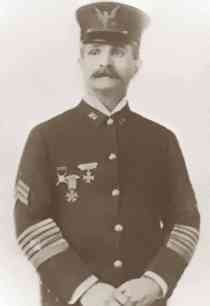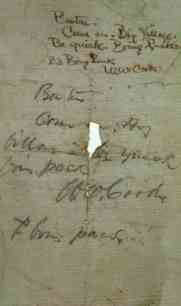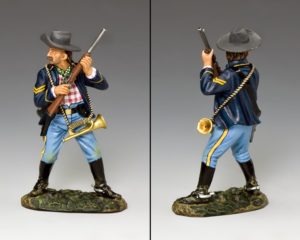
Giovanni Crisostomo Martino was born illegitimate at Sala Consilina – a small village in the province of Salerno – and was abandoned by his parents in an orphanage, where he was baptized on 28 January 1852. The fact that his second name is Crisostomo shows that he was probably born on 17 December 1851, being Saint Crisostomo’s day set by the Catholic Church on that day.
His life changed when he saw, in the main square of Sala Consilina, Giuseppe Garibaldi riding on a white horse. Apparently the small boy screamed at him that he wanted to become a Garibaldino wearing their red shirts but the General told him that he was too small, then the boy quipped that he wanted to play the trumpet not shoot people. The General, impressed, told him: “Fine, when you grow up come to see me.”
Martino went to see Garibaldi in 1866, at 14 and joined him as a volunteer following Garibaldi to Bezzecca, in Trentino, during the III War of Italian Independence. There, on 21 July 1866, 150 years ago, he was one of the soldiers who managed, with bayonet charges, to defeat the Austrians. Martino was there to spur the soldiers with the sound of his trumpet.
Demobilization did follow, and he returned to the bitter reality of his native village, where he should have gained some standing because his biological father came forward and there was a sort of reconciliation between them.
The reunification of the South with the North had been an economic disaster for the South and people in Sala Consilina were starving.
Giovanni Martino decided to leave his native Country and in 1873, in Naples, boarded a ship bound for the United States. Upon landing at Castle Clinton he was registered as ‘Giovanni Martino, a 21-year-old laborer from Sala’.
First he worked as hard laborer but then he found that the US Army was looking for soldiers, to tame the ‘wild West’ and he enrolled, changing his name into John Martin. He was able to ride a horse and he was thus assigned to a cavalry unit. On the morning of the 25 of June, 1876 he was temporarily assigned to serve as a bugler in the 7th Cavalry Regiment, led by Lieutenant Colonel George Armstrong Custer.
John Martin became forever known as a key player in the most famous battle of all Indian Wars: the Battle of The Little Big Horn. When Custer and nearly 210 troopers and scouts unwisely began his final approach to a massive Indian village located in the Little Big Horn River Valley. But before launching his multi-pronged attack, Custer sent John Martin off to locate Captain Frederick Benteen and tell him to come quickly for support and bring up the spare ammunition.
Prior to John Martin‘s departure Custer instructed him: “Trumpeter, go back on our trail and see if you can discover Benteen and give him this message. If you see no danger come back to us, but if you find Indians in your way stay with Benteen and return with him and when you get back to us report.”
Lieutenant William W. Cooke, General Custer’s adjutant, was apprehensive about Martin’s poor English and quickly scribbled a note containing General Custer’s orders for Captain Benteen. The note is still kept in a museum of the battle read:
Benteen,
Come on. Big Village. Be quick. Bring packs.
W. W. Cooke
P.S. Bring Packs.
The repetition and the sketchy handwriting show all the tension of the moment, frozen in history. Martin put the

note into his glove and departed at top speed.
Redskins warriors fired at Private Martin as he made his way back to Major Marcus Reno and Captain Benteen. Private Martin escaped injury but his horse was hit being struck by gunfire and bled to death soon after reaching the destination. After receiving Lieutenant Cooke’s written orders Captain Benteen inquired about General Custer’s location and if General Custer was being engaged by the Indians.
Private Martin informed Captain Benteen that General Custer was about three miles away and was fighting with the Indians. It’s usually reported that Private Martin stated, in a heavy Italian accent, that the Redskins were skedaddling (a term in fashion in those years, meaning ‘depart hurriedly’) but in 1906, while being interviewed by Walter Camp, Martin denied having used that word, which implied that the enemy was retreating.
Then Martin and the remaining Seventh Cavalry companies not riding with Custer were trapped on a nearby hill and fought off repeated attacks for 36 hours until their rescue by another U.S. Army column.
Martin was promoted Sergeant in 1900 and retired in 1904, completing nearly 30 years of service. In addition to his battlefield experiences, Martin testified at the January 1879 US Army Court of inquiry into Major Marcus Reno’s performance at The Little Big Horn. He then became famous as “Custer massacre survivor” and “The last white man to see Custer alive”.

In 1879, while serving in an artillery battery at Fort Schuyler (New York), he met and married an Irish girl, Julia Higgins, who would give birth to five children.
Martin then served in the Army until age limitations forced him to retire in 1904. He fought in 1877 at the Nez Perce campaign but his last action in combat came during the Spanish–American War (1898–1900) then settled with his family in Baltimore, Maryland, where they lived and operated a sweets and candy store.
By 1906, possibly following one of his daughters who had married there, he moved to Brooklyn, New York and took a job as a ticket agent at the 103rd Street Station of the nascent New York City subway system.
As he became old the long hours of commuting for his ticket-taker job forced him to change thus becoming a watchman at the nearby Navy Yard in 1915. In 1922, while crossing a street in Brooklyn, he was injured by a truck and hospitalized and then died from complications on December 24, 1922. John Martin was buried three days later in the Veterans section of the Cypress Hill Cemetery in Brooklyn, New York.
